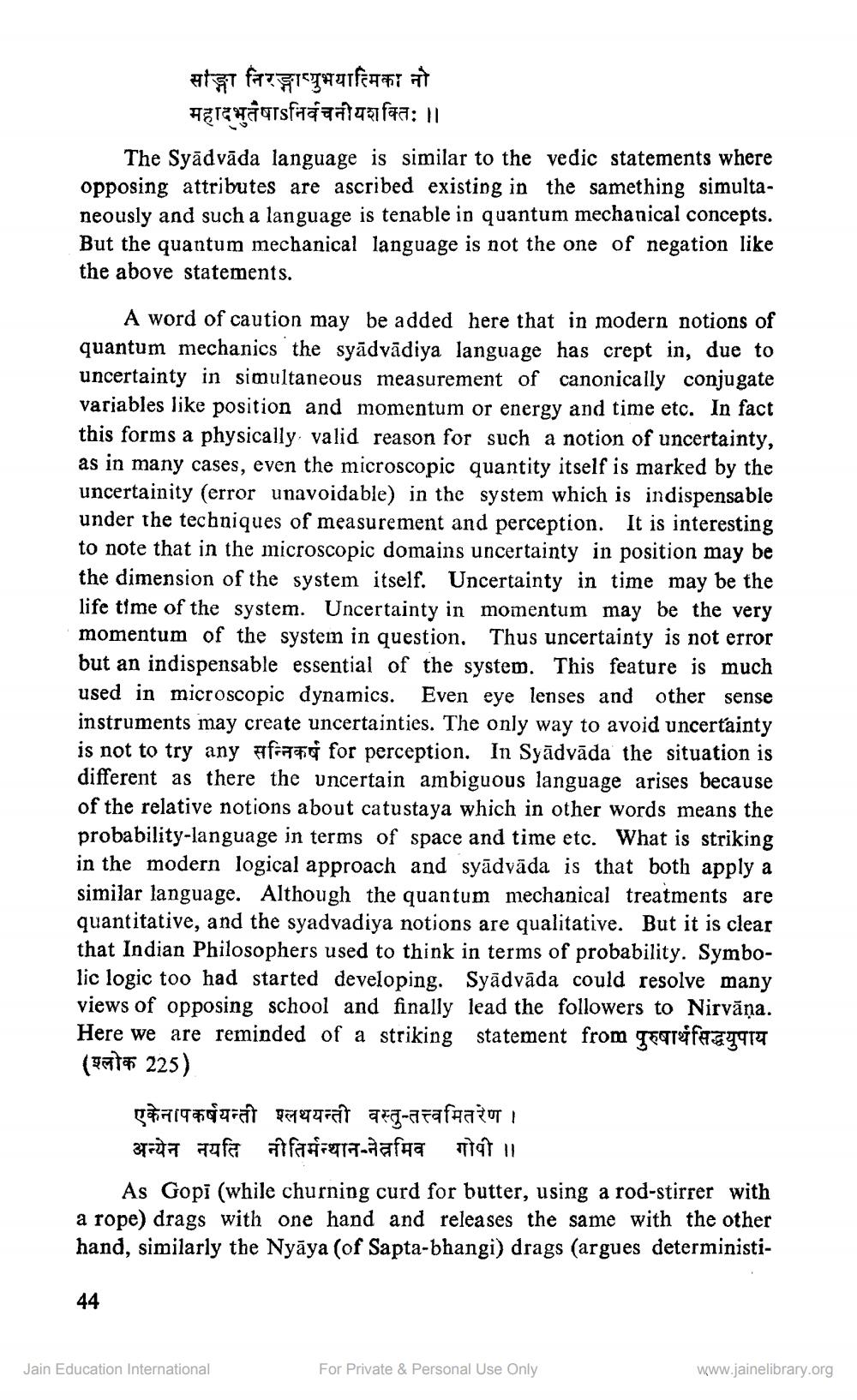________________
atqı fazgıyazıkaær at महाभूतैषाऽनिर्वचनीयशक्तिः ॥
The Syadvāda language is similar to the vedic statements where opposing attributes are ascribed existing in the samething simultaneously and such a language is tenable in quantum mechanical concepts. But the quantum mechanical language is not the one of negation like the above statements.
A word of caution may be added here that in modern notions of quantum mechanics the syādvadiya language has crept in, due to uncertainty in simultaneous measurement of canonically conjugate variables like position and momentum or energy and time etc. In fact this forms a physically valid reason for such a notion of uncertainty, as in many cases, even the microscopic quantity itself is marked by the uncertainity (error unavoidable) in the system which is indispensable under the techniques of measurement and perception. It is interesting to note that in the microscopic domains uncertainty in position may be the dimension of the system itself. Uncertainty in time may be the life time of the system. Uncertainty in momentum may be the very momentum of the system in question. Thus uncertainty is not error but an indispensable essential of the system. This feature is much used in microscopic dynamics. Even eye lenses and other sense instruments may create uncertainties. The only way to avoid uncertainty is not to try any af for perception. In Syadvāda the situation is different as there the uncertain ambiguous language arises because of the relative notions about catustaya which in other words means the probability-language in terms of space and time etc. What is striking in the modern logical approach and syadvada is that both apply a similar language. Although the quantum mechanical treatments are quantitative, and the syadvadiya notions are qualitative. But it is clear that Indian Philosophers used to think in terms of probability. Symbolic logic too had started developing. Syadvada could resolve many views of opposing school and finally lead the followers to Nirvāņa. Here we are reminded of a striking statement from ( श्लोक 225 )
f
44
एकेनापकर्षयन्ती श्लथयन्ती वस्तु-तत्त्वमितरेण । अन्येन नयति नीतिर्मन्थान- नेत्रमिव गोपी ॥
As Gopi (while churning curd for butter, using a rod-stirrer with a rope) drags with one hand and releases the same with the other hand, similarly the Nyaya (of Sapta-bhangi) drags (argues deterministi
Jain Education International
For Private & Personal Use Only
www.jainelibrary.org




